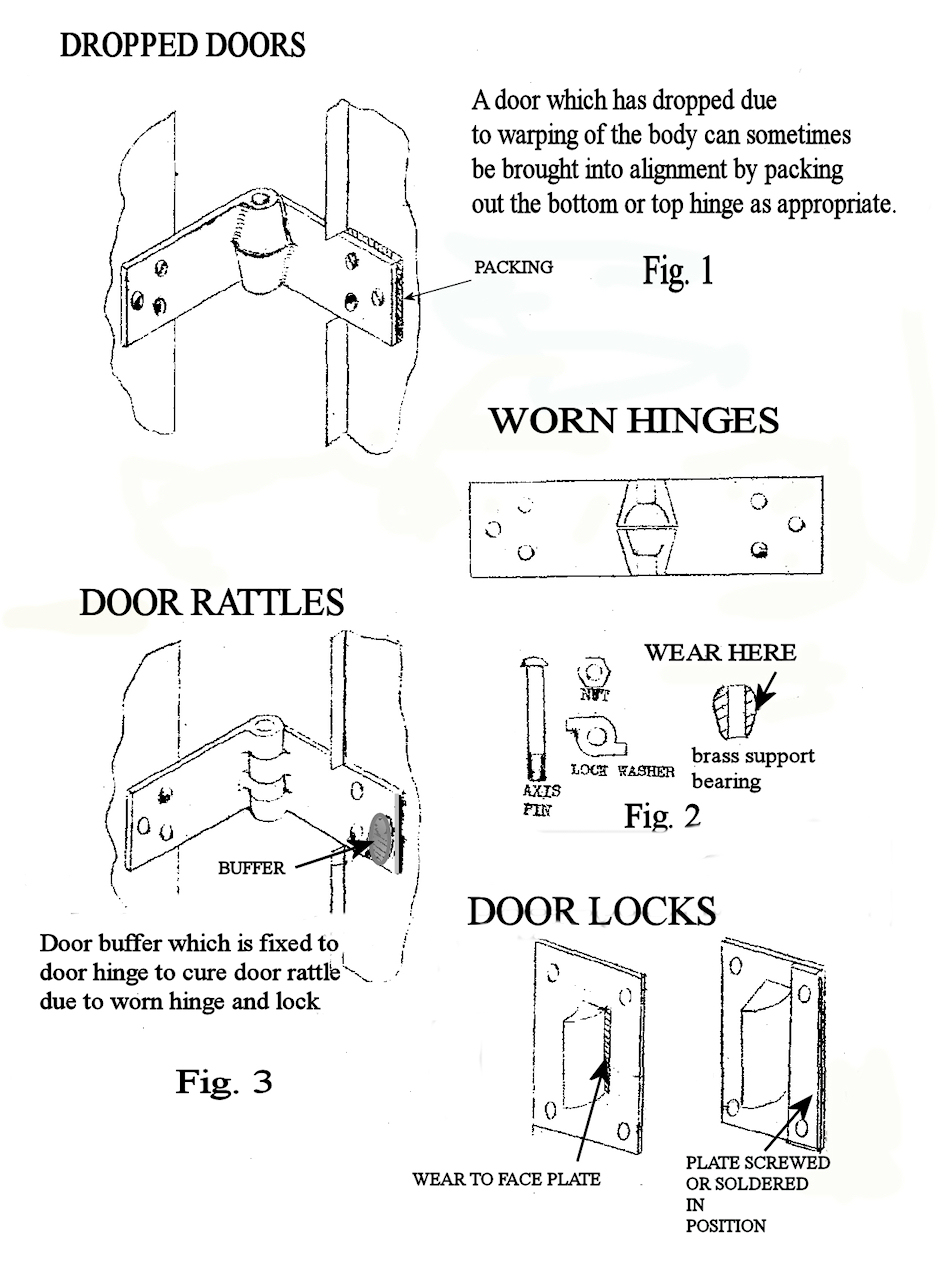
Dropped doors are an obvious cause of badly fitting
locks. Incidentally since this defect is usually caused by body distortion the
door is just as likely to rise as drop.
If the distortion is not too bad the matter can often be improved by packing out the lower hinge, if the door has dropped, or the upper hinge if the door has risen. Alternatively, the bolt hole in the door pillar may be filed away at the top or the bottom to allow the bolt to shoot home properly. This is not usually to be recommended. However since there is often a locating device known as a "dovetail" which forces the door to take up the correct position for engagement of the bolt and hole under normal circumstances if, therefore, the door has dropped it is no use extending the hole without altering the position of the dovetail, and this may not be possible. ' Packing out the hinge on the other hand will raise the door and allow the bolt to come into line (see figure 1). Note: if striker plates are fitted these may be loose; adjust and tighten screws.
HINGE WEAR
Wear on the hinge itself may be due to a worn axle pin or the brass bearing in the hinge itself. This brass ball which is found in later hinges is not quite round, but coned with a dome (see figure 2). Wear takes place on the axis pin or on the top part of the brass support bearing.
The older patterned hinge will have to be drilled out and a new axis pin made from an old bolt and shaped as required. If the owner of the car has slight wear on the door hinges and lock, there are rubber door buffers made as shown in figure 3. This old device might be obtained at an Auto Jumble if one keeps a sharp eye out for them on the stalls.
DOOR LOCK WEAR
With regard to the door locks themselves, one of the chief sources of annoyance is rattling due to side play between the bolt and the face plate through which it passes. This play can be taken up by soldering or screwing a plate to the lock so that it abuts against the side of the bolt as shown in figure 4